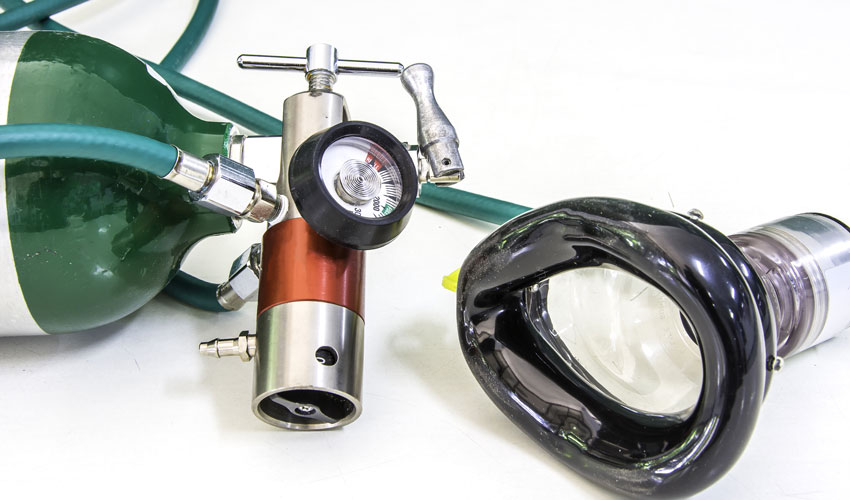CGA Submits Letter to gasworld Regarding Home Oxygen Fires Article
June 12, 2020
In April, 2020, the following Letter to the Editor was published in gasworld magazine:
The Compressed Gas Association (CGA) would like to comment on an article that appeared in gasworld last year (October 2019) regarding home oxygen fires in the United States. CGA believes the methodology used to compile the data for a study compiled by BPR Medical, titled The Prevalence and Impact of Home Oxygen Fires in the USA, and used in the gasworld article presents an inaccurate, but no less concerning, picture of home oxygen use. Further, CGA is concerned that this article paints a misleading picture of disregard for patient, caregiver, and emergency responder’s safety on the part of the U.S. medical oxygen industry when, in fact, safety is our primary concern.
The study referenced in the article was based on Google Alerts service results utilizing two search terms, “oxygen” and “fire”. Drawing conclusions from brief news stories is a tenuous activity. The stories show, at best, that oxygen supplies were present in the dwellings where the fires occurred; but correlation does not imply causation. Limited information is provided on the results of any fire investigations. The conclusions reached on the number of exploding oxygen cylinders is similarly suspect. In many cases, oxygen cylinders are counted as having exploded when the news reports merely mentioned they were present or that bystanders reported hearing “explosions”. Conclusions were reached based on incomplete information. Nonetheless, one death is one too many and CGA and the medical gas industry as a whole are committed to ensuring that patients, caregivers, emergency responders, and others are not harmed when our products are used.
Supplemental medical oxygen is used to help treat illnesses and to allow those with respiratory issues to live more active and fulfilling lives. Oxygen is essential for life, but it is not without hazards. One significant hazard is that items which burn in air will burn with greater intensity in an oxygen enriched environment. Items like clothing, bed linens, and furniture burn much more readily in an oxygen enriched environment.
Such an oxygen enriched environment can be created when patients use supplemental medical oxygen. It might be difficult to eliminate an oxygen enriched environment while using supplemental medical oxygen, but taking a few simple steps can significantly reduce the fire hazard. These include:
- Prohibiting the use of cigarettes, cigars, or vaping products while on medical oxygen or in proximity to those using medical oxygen
- Keeping open flames (candles, fireplaces) from close proximity to medical oxygen sources
- Exercising extreme caution when using gas stoves and other heated cooking surfaces in close proximity to medical oxygen equipment in use
- Not operating heaters and space heaters in close proximity to medical oxygen sources
Other possible steps include only using equipment designated for medical oxygen service and providing equipment to limit the flow of oxygen in the event of a fire.
CGA and the entire medical gases industry provide many forms of safe use and hazard identification and avoidance information for patients, caregivers, healthcare facilities, emergency responders, and others. These range from safety instructions for patients to detailed technical publications on the design, manufacture, testing, and cleaning of cylinders, valves, regulators, and medical gas supply systems.
This is a continuing effort with work now being completed on new publications and posters specifically intended to help patients and caregivers more easily identify and mitigate hazards. A partial listing of these materials is provided below.
For more detailed discussion on the hazards and handling of oxygen, see CGA P-39, Oxygen-Rich Atmospheres, or NFPA 53, Recommended Practice on Materials, Equipment, and Systems Used in Oxygen-Enriched Atmospheres. Also see CGA P-2, Characteristics and Safe Handling of Medical Gases, CGA P-2.5, Transfilling of High Pressure Gaseous Oxygen Used for Respiration, and CGA P-2.7, Guide for the Safe Storage, Handling, and Use of Small Portable Liquid Oxygen Systems in Health Care Facilities.
In addition, an end user safety poster on Home Oxygen Safety may be downloaded for free from CGA’s website.
CGA is committed to promoting ever-improving safe, secure, and environmentally responsible manufacture, transportation, storage, transfilling, and disposal of industrial, medical, and food gases and their containers – and we thank gasworld for the opportunity to comment on this very important topic.
Rich Gottwald
President & CEO
Compressed Gas Association


